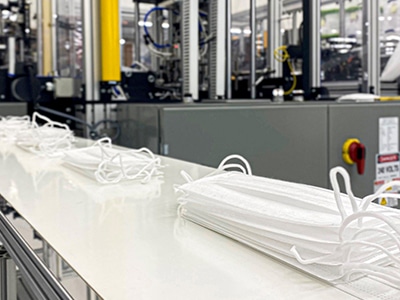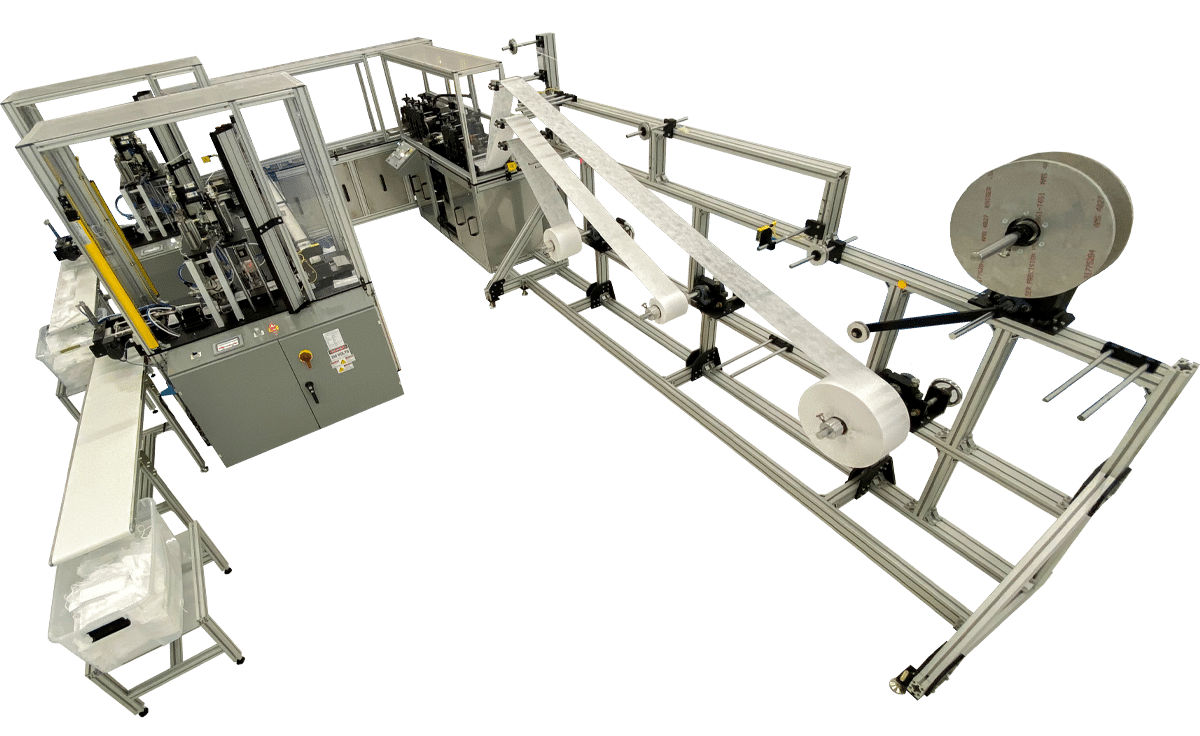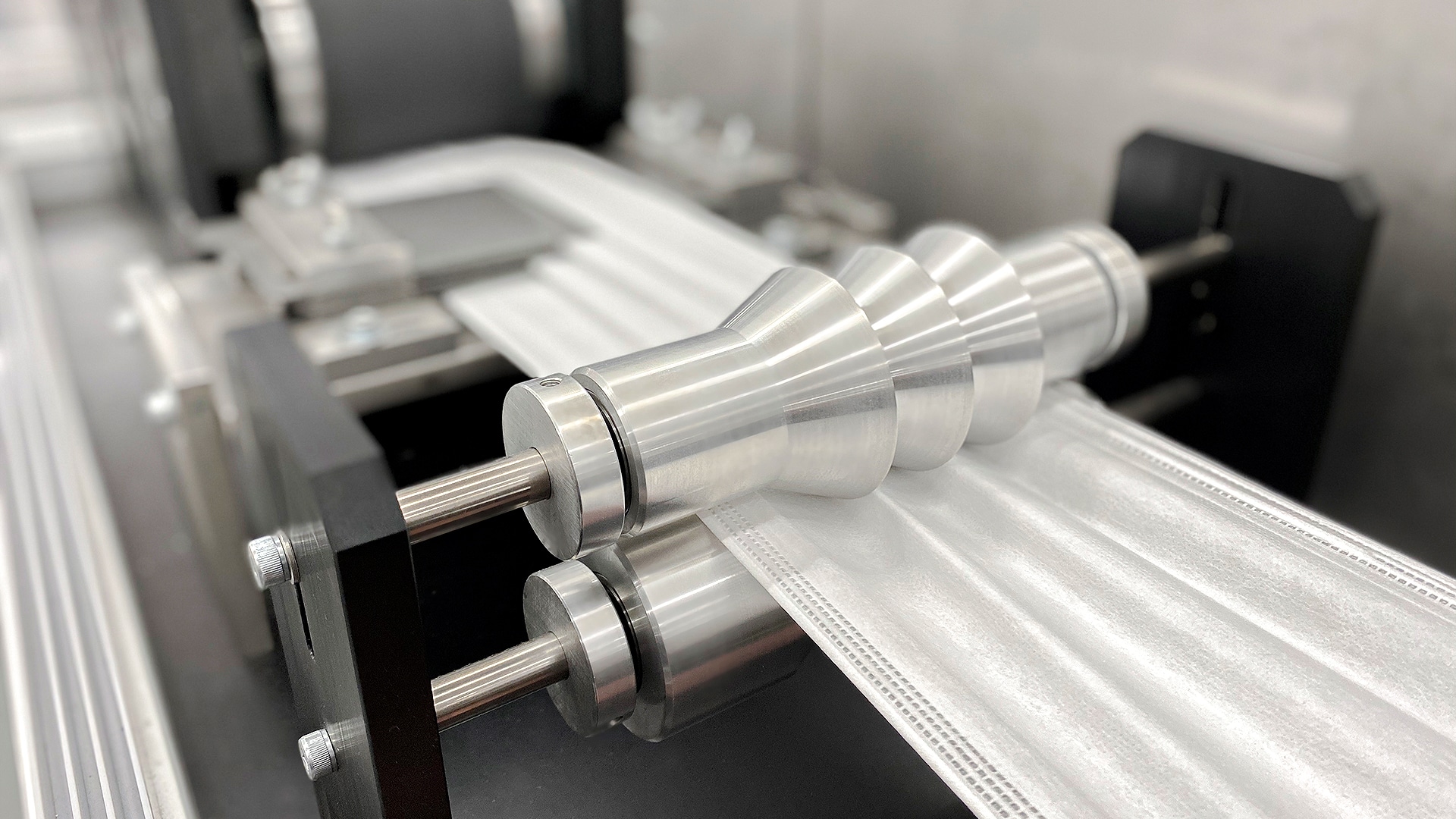
07
Apr
Disposable Mask Making Process
Wearing a face mask can protect you from countless airborne infections, including the COVID-19 virus, the flu, and other respiratory infections. Because masks are such a vital part of keeping us all safe through the COVID-19 pandemic, it is important to learn how to effectively produce disposable masks.
If you are interested in learning about how a face mask-making machine works and how we produce disposable face masks, keep reading!
Mask Making Materials
Disposable face mask production uses a type of nonwoven fabric. Nonwoven fabrics are made out of fibers and are essentially webs of entangled fibers wound together.
Nonwoven fabrics are most often used for disposable face masks because they allow for good air permeability while still keeping harmful bacteria filtered out. The most common material used to make a disposable face mask is polypropylene.
Face Mask Making Machine
If you are creating face masks in a large quantity, you will want to use some type of mask production equipment to make the process faster! This makes it easy to create disposable face masks quickly and automatically.
It automatically performs the entire production and creates uniform masks in a fraction of the time when compared to manually making them. Here are the steps used in a face mask-making machine.
Material Entry
The first step is the entry of raw materials. The materials are unwound and drawn into the production process in a single flow of material as they are combined together.
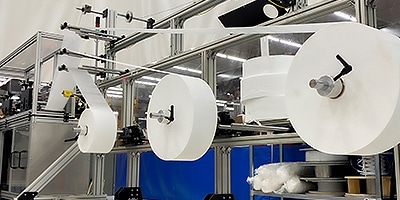
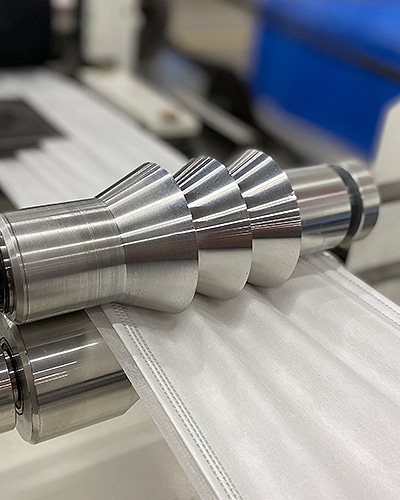
Folding Process
Once the machine has combined the raw materials and they are on their way through the machine, the next step is to fold them. The way the machine folds the materials is what makes the fabric pleated. These pleats are in any disposable 3-ply face mask.
After the pleats are folded into the mask, the machine uses ultrasonic welding to make a seam on the ends of the mask. This type of welding uses mechanical vibrations which soften or melt the material to make the seam.
Cutting Masks To Size
After the welding process, the masks need to be cut to the correct size. Before this is done, the material is still connected to the spool of raw material. Using the mask-making machine, the masks are cut to the size of an individual mask and then transported to the next station in the machine.
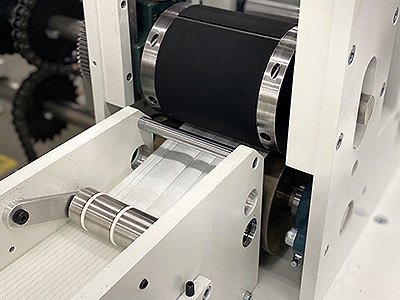
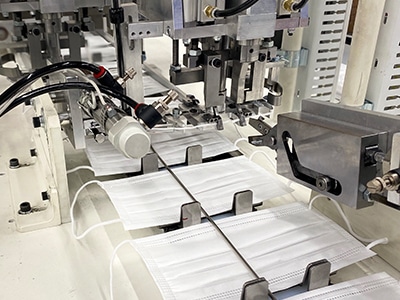
Adding Ear Loops
The next step in the process of constructing masks is to add the ear loops to the edges. With this part of the machine, the ear loop attachments are automatically fed to both sides of the mask where they are ultrasonically welded to the mask.
Stacking Finished Masks
The masks are now complete! The final process in the mask production machine is to stack the finished masks into stacks. The machine is programed with the number of masks in each stack and stacks them to the correct amount. Once the machine stacks the masks, they are manually or automatically packaged and ready for use.
